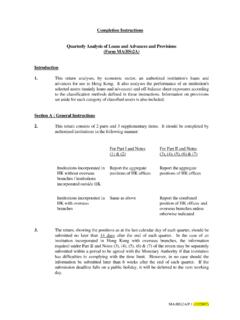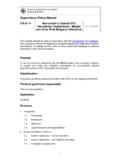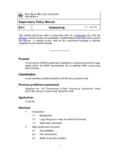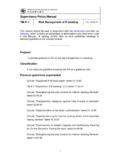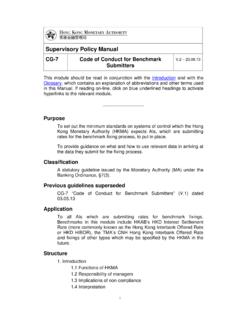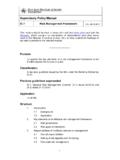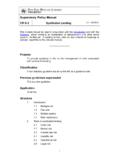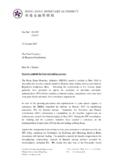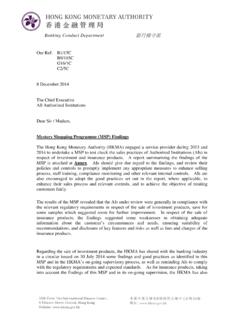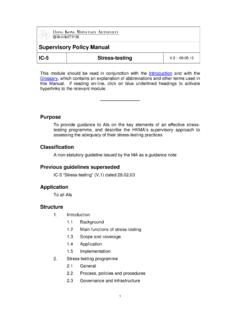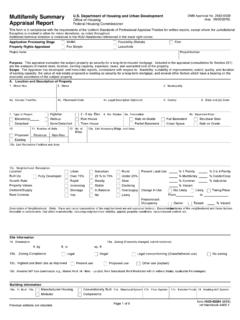Transcription of Sources of employment growth in Hong Kong - hkma.gov.hk
1 FEATURE ARTICLEHONG KONG MONETARY AUTHORITY QUARTERLY BULLETINSEPTEMBER 200716 Sources of employment growth in Hong KongThis paper analyses the Sources of employment growth and assesses the contributionof Mainland China s demand to job creation in Hong Kong. Contrary to perceptions,this analysis suggests the import/export sector, instead of the financial sector, is themajor contributor to employment creation in Hong Kong in recent years thanks to thefast-growing re-export trade. Increasing service demand in Mainland China willcontinue to boost domestic employment in areas like trade and financial services, whilethe construction boom in Macao is expected to create more new jobs for Hong Kong sconstruction workers.
2 However, if the headline unemployment rate continues to ease, atightening labour market may put upward pressure on wages and expanded at an average rate of 2-3%per annum from 2004 to 2006 after the economicdownturn in the preceding years. Since the trough in2003, some 318,000 jobs have been created by thesecond quarter of 2007, mainly in the service data show structural shifts inemployment across different service sectors in recentyears. Growing trade and financial activities betweenHong Kong and Mainland China have boostedemployment growth in the import/export and financialservices 2001 to 2005, about a quarter of theemployment growth in Hong Kong was derived fromgrowing service demand in China, particularly inareas like trade and financial services as a result ofChina s strong economic performance.
3 This helpedmitigate the negative impact on the domestic labourmarket during the cyclical downturn in Hong Kong higher employment , a sectoral breakdownshows that unemployment rates remained high in theconstruction, restaurants/hotels and Increased infrastructure spending by theGovernment and the construction boom in Macaoare expected to create more jobs for domesticconstruction workers, while growing householdspending and inbound tourism will boost employmentin retail trade, restaurants and hotels, which will helplower the overall unemployment of employment GrowthIn recent years, stronger growth in employmentrelative to the labour force has driven down theunemployment rate from the peak of in mid-2003 to a nine-year low of in the secondquarter of 2007.
4 Distribution of employment byeconomic sector shows that growing labour demandin the service sector has been the key driver ofemployment growth over the past few years, asby Frank Leung, Kevin Chow, Wendy Woo and Dickson Tam of the Research Department1 Except for hotel services, of which the unemployment rate hasdeclined to the pre-1997 ARTICLESOURCES OF employment growth IN HONG KONG17 HONG KONG MONETARY AUTHORITY QUARTERLY BULLETINSEPTEMBER 2007domestic manufacturing industries continued todownsize their operations in Hong Kong andsubdued residential investment restrained labourdemand in the construction sector (Chart 1). Theexpansion in service sector employment has beenbroad-based, with job creation mainly concentratingin import/export trade, and personal, financial andbusiness services (Chart 2).
5 Person ( 000)Person ( 000)CHART 1 employment by economic sector Source: C&SD. 2003004005006007008009495969798990001020 30405062,0002,2002,4002,6002,8003,0003,2 00 Services (rhs)Manufacturing (lhs)Construction (lhs)%2-2650341-1 CHART 2 Contribution to service sector employment growth Sources : C&SD and staff estimates. 97989900010203040506 Wholesale & retailImport/exportRestaurants & hotelsTransport & communicationsFinance & insuranceReal estate & business servicesSocial/personal servicesService sector employment growthThe import/export sector has been the maincontributor to output and employment growth in therecent economic upturn. During 2003-06, whenemployment in the import/export sector grew at itsfastest annual pace of , nearly one quarter ofoutput was attributed to external trade activities.
6 Asa result, the share of the import/export sector in totalemployment increased to 15% in 2006 from 10% in1996, the highest among the key economic sectors(Table 1). This was followed by the real estate andbusiness service sector, where employmentincreased by an average annual rate of during2003-06, mainly reflecting strong job growth inaccounting and legal services. Over the sameperiod, employment in the financial and insurancesector rose by an annual rate of , marginallyhigher than the overall growth rate in service sectoremployment. employment growth also turnedpositive in wholesale/retail trade, restaurants andhotels sectors, due to the strong revival in consumerspending and inbound tourism. However, labourdemand remained weak in the construction sector,while manufacturing employment continued to ARTICLESOURCES OF employment growth IN HONG KONGHONG KONG MONETARY AUTHORITY QUARTERLY BULLETINSEPTEMBER 200718 What has driven the currentemployment growth cycle?
7 The strong revival in aggregate demand has been themain factor behind the recent expansion in servicesector employment . Historical data show there is astrong positive relationship between employmentgrowth and output growth , with the former beingdriven by the latter with a time lag of about onequarter (Chart 3). During 2003-06, real GDP grewat an above-trend rate of per annum, turningthe output gap to positive in 2005 and 2006. Thebroad-based economic upturn and growingprofitability have supported business owners toexpand their workforce and service sector employment has generallybenefited the most from the recent economicupswing, disaggregated data show that employmentgrowth varied substantially across different service% yoy% yoyCHART 3 Output growth and employment growth Sources : C&SD and staff estimates.
8 -8-40481216949697989900010203040506-4-20 2468 Real GDP growth (lhs) employment growth (rhs)TABLE 1 employment growth by economic sectorShare in total employmentAverage annual growth (Unit: %) & & & & estate & business & personal Public Education & Other personal : C&SD and staff ARTICLESOURCES OF employment growth IN HONG KONG19 HONG KONG MONETARY AUTHORITY QUARTERLY BULLETINSEPTEMBER 2007sectors. Chart 4 compares output growth andemployment growth of key service sectors during2003-06. employment growth in real estate andbusiness services was shown to be more responsiveto output growth , as these sectors were more labour-intensive and the scope for labour-capitalsubstitution was limited. In contrast, employmentgrowth in communications, restaurants and hotels,wholesale/retail trade remained subdued, and stayedbelow their output growth .
9 One striking developmentis that despite the strong expansion in financialactivities in recent years, employment growth in thefinancial and insurance sector has lagged behindoutput 4 Output and employment growth among keyservice sectors Sources : C&SD and staff estimates. 02468101214161820 Average annual growth (2003-2006)0123456789 OutputFinance &insuranceReal estate &business servicesImport/exportTransport& storageCommunicationsWholesale& retailRestaurants & hotelsSocial & personalservicesOne possible explanation for the tepid growth infinancial sector employment relative to output growthis that financial institutions have been investingheavily in information technology (IT) and shiftingtheir business mix to higher value-added servicessuch as financial planning and wealth factors have helped raise labour productivityand led to higher output per employee (Chart 5).
10 Compared with other service sectors, per-labour ITspending in the financial and insurance sector is thehighest (Chart 6). The relatively limited labour supplyin face of the booming demand may also explain themoderate growth in financial sector employment inrecent $ 0001,20001,8008001,4001,6001,000600 CHART 5 Output per labour in the financial services sectorSources: C&SD and staff estimates. Financial & insuranceReal estateBusiness services20040020002001200220032004200520 06HK$ 000 CHART 6 Per-labour IT investment in the service sectorSources: C&SD and staff estimates. Finance and insuranceTransport and communicationsReal estate and business servicesWholesale, retail, import/export, restaurants and hotelsSocial and personal services20002001200220032004200502040608 0100 Contributions from MainlandChina s DemandWhile the strong revival in economic activities hasbeen the key driving force of employment growthin recent years, growing business activities withMainland Chinese enterprises and strongerservice demand from Mainland China have creatednew job opportunities in the domestic labourmarket.
